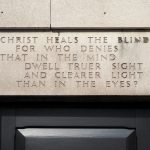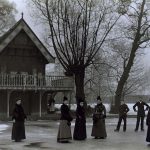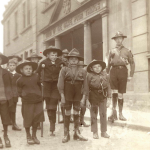John Langdon Down was an eminent physician who, in the mid-nineteenth century undertook pioneering work in the diagnosis and treatment of learning disabled people. His key academic paper, entitled “Observations on an Ethnic Classification of Idiots” resulted in the definition of what later became known as ‘Down’s Syndrome’
Though a chemist at heart, Langdon Down decided that a career in medicine might prove more lucrative, and began his studies at the Royal London Hospital in 1853. While there he received many awards and honours and it seemed likely that upon his qualification he would be elected to the staff of the Hospital. Instead he surprised many of his peers by specialising in the field of ‘idiocy’, taking up the position of Medical Superintendent of the Earlswood Asylum for Idiots in Surrey in 1858.
Prior to Langdon Down’s work, those diagnosed as learning disabled were dismissed as ‘idiots’ and ‘imbeciles’, ill defined terms covering a wide range of conditions. His positon at Earlswood allowed him to refine these definitions, and inspired him to look at practical ways in which inmates of this and similar institutions might have their conditions effectively treated.
Prior to Langdon Down’s work, those diagnosed as learning disabled were dismissed as ‘idiots’ and ‘imbeciles’.
In 1868, with the assistance of his sons, Reginald and Percival, he established his own institution at Normansfield in what was then Middlesex (now the London Borough of Richmond Upon Thames). In comparison with similar institutions of the time, the regime at Normansfield was surprisingly liberal and humane. Residents were encouraged to mix together; the positive influences of art and nature were extolled; a well rounded and generous diet was to be provided; both physical exercise and bodily cleanliness were prescribed before medication; corporal punishment was forbidden; and living conditions resembled less the draughty, institutional wards of old, and more the comfortable, ‘domestic’ rooms of an up-market sanatorium. Between 1877 and 1889 a farm, a theatre,
a boathouse and a drill hall were all added to the main building to provide entertainment, exercise, and what would now be termed occupational therapy for the residents.
Living conditions resembled less the draughty, institutional wards of old, and more the comfortable, ‘domestic’ rooms of an up-market sanatorium.
After John Langdon Down’s death in 1896, his sons took over the running of Normansfield. The building continued to be used as a hospital for patients with an intellectual disability until it was closed in 1997. Now it is the home of the Langdon Down Museum of Learning Disability, and the headquarters of the Downs Syndrome Association.
In 2013, the University of the Third Age (U3A) carried out a study in collaboration with Langdon Down Museum “to augment its historical database on how Normansfield operated and the people it cared for.” History of Place has been generously granted permission to reproduce some of the results of that research. In particular some of the case studies of patients who were not only learning disabled, but may have been and sight and hearing disabled as well, will be highlighted in future blogs.










